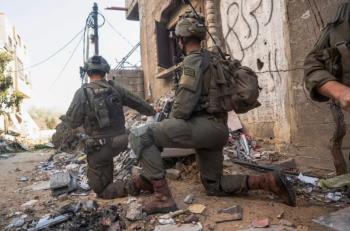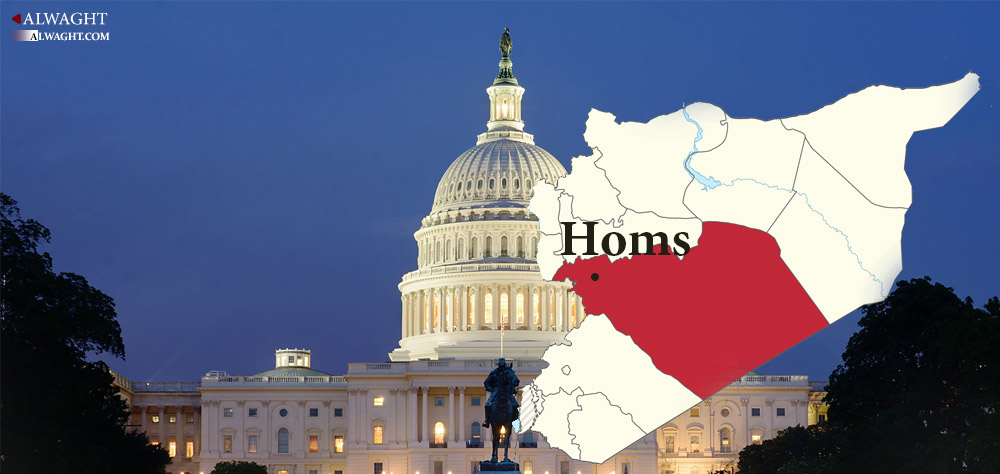Alwaght- Understanding that it lost the battle in Aleppo and the Syrian army is the certain winner of the fight, the US rushed to capture the historical city of Palmyra using ISIS terrorist group.
On December 12, the terrorists holding eastern Aleppo reached the end of the line. The countdown for their defeat started. Five days later the time for strategic win of the Resistance camp came. But news of fall of the ancient city of Palmyra in eastern Homs province to the terrorists of ISIS affected celebration of the Aleppo triumph.
However, fall of Palmyra should not be attributed to the strength of the terrorist group but to the recent months' chain defeats sustained by the US in Syria’s battlegrounds.
The Americans earlier received a heavy loss in Aleppo’s north. This loss was exactly during the time that they failed to prevent an encirclement imposed on the terrorists in east of Aleppo by the Syrian forces and their allies.
Earlier this summer, when the government forces tightened their blockade on the Aleppo’s east, the Western-Arab operation centers went to great lengths to break the government-imposed siege on the terrorists, but received a huge blow as the Syrian forces along with their backers resisted to the opposite bloc's encirclement-breaking bid.
The Americans unleashed their threats against the Resistance Axis. The threats were implemented on the ground when the US fighter jets bombed a unit of the Syrian army camping in Deir ez-Zor province.
By conducting this air raid, in addition to breaching an accord with Russia to draw a line between the terrorists and what it branded the moderate opposition, Washington tried to prevent further joint Syria-led operations.
In response, pro-Damascus camp prioritized full liberation of the northern city of Aleppo, dealing a working blow to Washington’s plans by fully liberating Aleppo from terrorists.
The US Secretary of State John Kerry rushed to announce that the war will continue in Syria after Aleppo's liberation. “Fall of Aleppo, should it happen, does not end the war,” Kerry said, using the word “fall” instead of “liberation” while knowing well that the city is retaken from the terrorists by the government.
Simultaneously, ISIS, while sustaining one-after-another defeats in a set of fronts like Iraq's Mosul, Raqqa, and Al-Bab, on the strength of 4,000 of its special forces managed to re-occupy Palmyra after a full week of fierce clashes.
Certainly, in the future the Resistance camp will start operation in eastern Homs to respond firmly to the US disturbance of the fight against terrorism. The Western-Arab camp should consider the fact that retaking Palmyra will not mark the end of war. They should await an incoming painful anti-terror scenario. The time will make them understand.
What is the US and its allies seek in eastern Homs, particularly in Palmyra?
Certainly, recapturing Palmyra with a direct US order is not a main goal for Washington. Seizing control of some important regions like Jabal Al-Bayda, Jabal Marbat Al-Hessan, Jabal Al-Mazar, Jabal Al-Hamra, Jabal Jazel, and Hayan Gas Treatment Plant is only a prelude to occupation of T4 Military Airbase which operates as the second most-used base of the allied forces in Syria.
Currently, the heavy fighting continues around strategic T4 Airbase. A majority of the clashes between the Syrian forces and ISIS terrorists are taking place in the eastern fronts in Al-Bayarat village and in the northern fronts in Desolate Brigades area.
T4 Airbase is the largest Syrian military airbase, located 85 kilometers east of Homs. From north, it is 25 kilometers apart from Al-Shaer oilfield.
The airbase is currently home to a relatively large numbers of SU-32, MIG-29, MIG-27 fighter jets, as well as many tanks.
The airbase also accommodates advanced radar systems and other military equipment operated by 300 servicemen from Syria and the allied countries. This clarifies the American motivation for launching assaults in the area through ISIS.
Will Washington make gains in eastern Homs by means of ISIS?
Damascus grew concerns about security of the major military base in eastern Homs, so it sent hundreds of forces as fortifications to the area, assuring a full control of it. The near future will witness new anti-ISIS operation in the area.
On Wednesday, after ISIS' recent assault on eastern Homs the seized spots were captured back from the terrorist group. As the clashes went on, the Desolate Brigade region in north of the airbase was taken back from ISIS, ushering in a series of counterattacks targeting the terrorists in Palmyra.



























